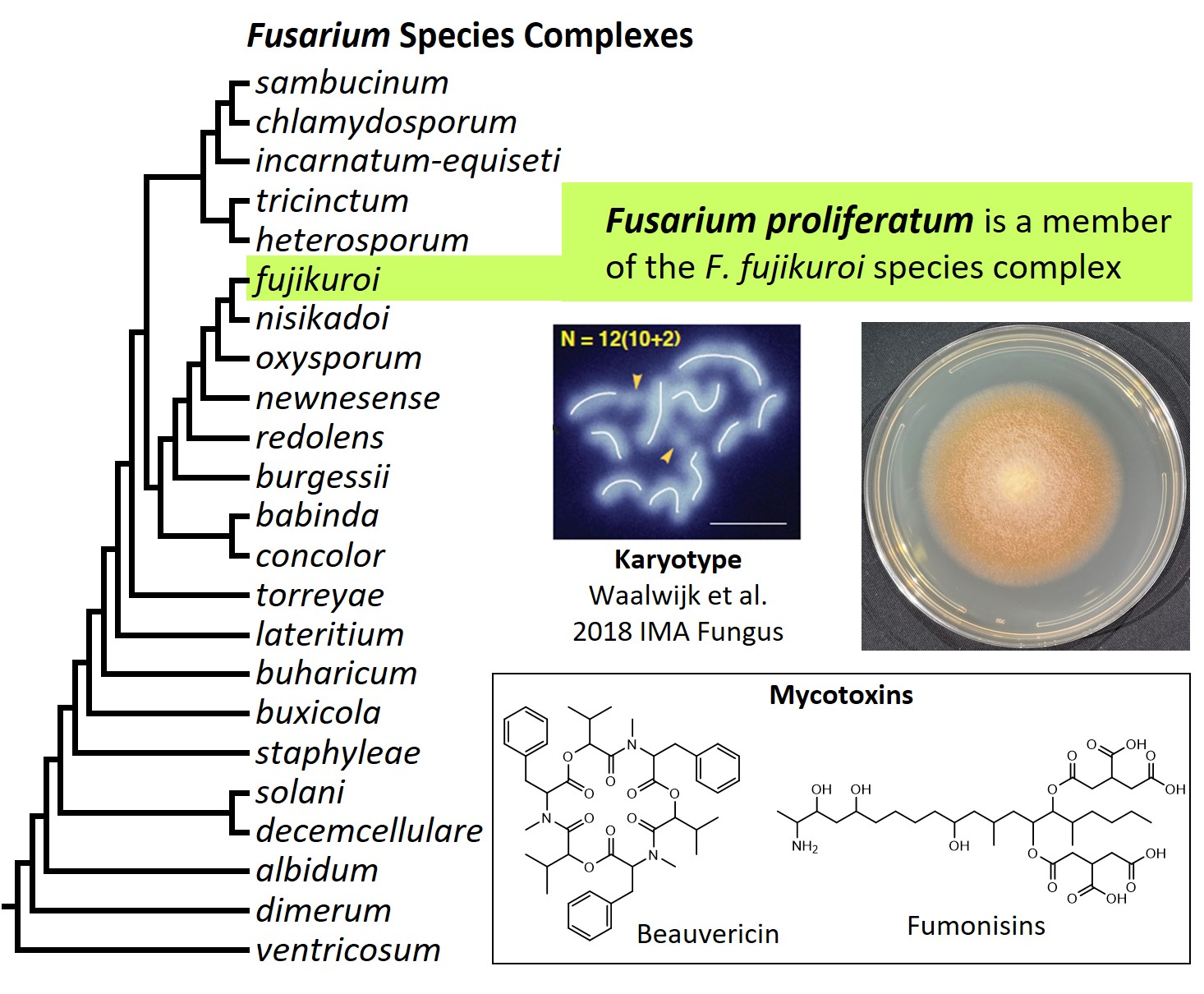
Fusarium (family Nectriaceae) is a species-rich fungal
genus that poses a dual threat to agriculture because many species
cause destructive crop diseases and/or contaminate infected crops
with toxic secondary metabolites (mycotoxins) that are health
hazards to humans and other animals. Some Fusarium
mycotoxins are frequent contaminants of dried distillers grains,
coproducts of grain-based ethanol production used as a protein-rich
livestock feed. In addition, some species of Fusarium are
pathogens of energy crops such as corn and sugar cane. Some species
can also exist as endophytes in plants, including some bioenergy
crops.
DNA-based phylogenetic analyses have resolved Fusarium
into 23 multi-species lineages known as species complexes (Geiser
et al. 2021). Fusarium proliferatum is a member of the
Fusarium fujikuroi species complex, which consists of over
50 phylogenetically distinct species that have been further
resolved into three major clades: the African Clade, American Clade
and Asian Clade. Fusarium proliferatum is a member of the
Asian Clade. During its evolutionary diversification
Fusarium has undergone multiple chromosomal fusions and,
as a result, members of early diverging species complexes tend to
have more chromosomes (15 – 20) than later diverging
complexes (4 – 7). Members of the F. fujikuroi
species complex typically have 12 chromosomes, but one of them is
dispensable. Fusarium proliferatum causes economically
important diseases of diverse crops, including maize, rice, date
palm, asparagus, fig and onion. The fungus is one of the most
significant causes of fumonisin mycotoxin contamination, and
produces several other mycotoxins (e.g., beauvericin and
moniliformin) whose impacts on health are not well understood.
Strain ET1 was isolated from asymptomatic roots of the orchid
Dendrobium moschatum grown in a greenhouse at the Tsitsin
Central Botanical Garden in Moscow, Russia. The strain is unusual
for F. proliferatum in that it produces the plant hormones
gibberellins and has two paralogs of the gibberellin biosynthetic
gene cluster (Niehaus et al. 2016).
References:
Geiser DM, Al-Hatmi A, Aoki et al. 2021. Phylogenomic analysis of a 55.1 kb 19-gene dataset resolves a monophyletic Fusarium that includes the Fusarium solani Species Complex. Phytopathology 111: 1064-1079.
Niehaus EM, Munsterkotter M, Proctor RH, et al. 2016. Comparative "Omics" of the Fusarium fujikuroi species complex highlights differences in genetic potential and metabolite synthesis. Genome Biol Evol 8:3574-3599.
